Spain lives and breathes food like few other places: from region to region, local life is inextricably tied to the production, preparation and consumption of it. As a result, it’s simply the best way to really get under the skin of the country.
In Andalucia, you can try some of the world’s finest food and wine, dine in renowned Michelin restaurants and sample the menus of some of the top chefs in the world. Equally, gourmet travellers might enjoy visiting a local market or bodega to pick up fresh, seasonal ingredients and dine at home in the comfort of your private villa.
After all, who doesn’t love to try out new flavours and foods while travelling? Indulging in the local cuisine is a huge reason why our guests choose to stay in a self-catering villa instead of a hotel, giving you the freedom to dine how you’d like during your stay in Spain.
In this guide, we explore the history of Andalusian cuisine and share some of our favourite traditional dishes and where best to enjoy them in the region.
What Makes Andalusian Cuisine So Special?
Andalucía boasts one of Spain’s most captivating culinary legacies – a magnificent tapestry woven from centuries of cultural conquest and settlement. Each civilisation that made this sun-drenched region home left behind delicious treasures that continue to tantalise palates today.
The Romans planted the seeds of Andalucía’s wine and wheat traditions, while Arab settlers transformed the landscape with ingenious irrigation techniques that coaxed lush orchards and vegetable gardens from the earth. These same innovations birthed the sprawling olive groves that now crown Andalucía as the world’s olive oil capital.
Picture the dramatic coastline where two mighty oceans collide: the Mediterranean and Atlantic crash together along Andalucía’s shores, delivering an extraordinary bounty of seafood. This maritime marriage creates some of the region’s most celebrated dishes, with prized tuna taking centre stage in countless local specialities.
The rolling hills are the home of Iberian pigs; noble creatures whose exquisite meat transforms into Spain’s most coveted cured delicacies. From silky jamón to aromatic sausages, these versatile pork products represent the pinnacle of Spanish charcuterie.
And then there’s tapas, Andalucía’s gift to the culinary world. This is where the beloved tradition was born, making the region an absolute paradise for food lovers. Each small plate tells a story, inviting you to embark on a delicious journey through local flavours, one perfect bite at a time.
Our Favourite Traditional Andalusian Cuisine
One of the best ways to feel connected to the culture of a travel destination is to sample its traditional cuisine. Here is our pick of some of the best local gourmet delights you can try while exploring and enjoying the food in Andalucia.
Sherry Wines
Sherry is a world famous pre-dinner drink that originates from the city of Jerez de la Frontera, which was the European Wine Capital in 2014. It’s mainly produced in the southwest part of the region, which is home to the famous ‘sherry triangle’ that also includes Sanlúcar de Barrameda and El Puerto de Santa María.
Sherry comes in several different varieties that pair beautifully with different kinds of food and is enjoying a real renaissance among wine circles lately. Here are some of our favourites that we recommend you try alongside some traditional Andalusian cuisine.
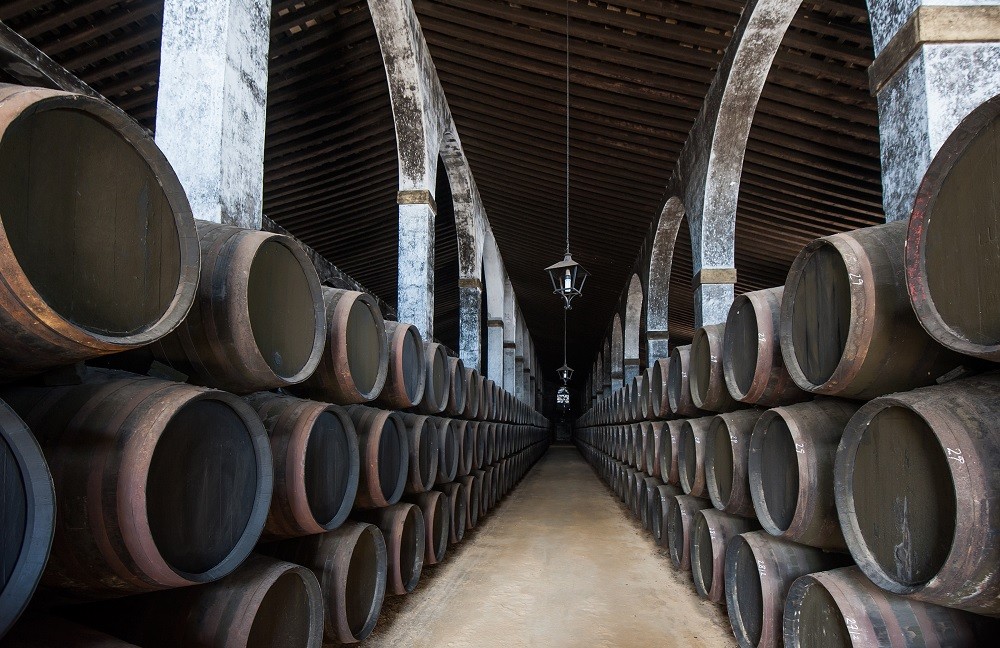
Fino
Light-coloured and very dry, this sherry comes from Jerez itself. Served cold and drunk as you would a good white wine, it goes perfectly with shellfish, jamí³n ibérico (see below) and mild cheeses.
Manzanilla
Similar in colour and taste to fino, Manzanilla is also served cold and best accompanies fish and shellfish. Fino and manzanilla are the least alcoholic of the sherry types and should not be kept once opened.
Amontillado
Amber-coloured, smooth and rich in taste, amontillado goes well with white meats, oily fish and cured cheese.
Oloroso
Dark and with a strong scent, this is also a dry sherry but with a more intense taste than fino. The intensity suits red meats and strong cheeses.
Palo Seco
Also dark, Palo Seco is strongly scented and flavoured. It’s good with game, foie gras and strong cheeses.
Pedro Ximenez
Dark and sweet with a rich, syrupy texture, Pedro Ximenez has a strong and intense flavour that pairs well with strong cheeses and desserts.
Cheese
The cured sheep cheese named Manchego is undoubtedly the best-known cheese in Spanish food culture. But there are plenty of others to keep an eye out for, from creamy blue Asturian Cabrales, Navarran/Basque Idiazabala and Galician Arzúa-Ulloa in the north and Torta del Casar in the west, to Cadiz’s Payoyo and Malaga’s goats’ cheeses down south.
Particularly notable is cheese from the mountains in Ronda, which are some of the most beautiful in Andalusia. They’re also home to numerous goat herds that live at high altitudes in wet conditions (the village of Grazalema near Ronda has the country’s highest rainfall), meaning excellent pasture and, by extension, delicious cheese.
Most goats’ cheese from Ronda is made using traditional methods, and brands to look out for are Flor de Ronda and Queso Payoyo. Here are some of the other best kinds of cheese to enjoy in Andalucia.
Queso Fresco
This ‘fresh cheese’ is the lowest-fat version available and is pure white with a creamy texture. It’s ideal in salads and on canapés with quince jelly or anchovies.
Rulo de Cabra
You can buy a slice of Rulo de Cabra from a roll with a thick white rind. This version combines superbly with apple and caramel in a green salad or as an accompaniment to foie gras.
Queso Semi-Curado o Curado
A harder type of cheese, semi-cured and cured goats’ cheeses have a stronger taste than fresh varieties and usually have a dark yellow rind. This is best cut into small slices and eaten as a tapa, drizzled with good olive oil, perhaps with cured ham.
Queso Payoyo
Unique to this part of Andalusia, this strong cheese is fast gaining popularity in gourmet bars where it’s often served as a tapa.

Spanish Ham
Andalusian cured ham is a highly prized gourmet treat, especially when it comes to Jamon ibérico de bellota. This creamier version of the regular cured ham comes from black pigs bred in the western area of Andalusia around Huelva.
The pigs roam free around large oak-filled pastures all year, and in the autumn, their diet consists almost entirely of acorns. Look for the “Pata Negra” black label around the hoof for the best ham in the world!
The legs of ham are cured for 24-48 months, and the end result is an intensely-flavoured meat that’s dark red in colour and a real highlight of Andalusian food. Served in wafer-thin slices as a tapa, it’s a great accompaniment to a glass of fino sherry or intense red wine.
You can buy a whole leg of cured ham, and if kept in dry conditions, it will last for as long as it takes you to eat it! However, cutting ham is a fine art and probably best left to those in the know.
For your own tapas creations or a charcuterie board, opt for pre-packed slices and open the packet a while before you plan to eat it to allow the ham to breathe. You can also buy ham off the leg in all good food stores – they slice off the amount you need. As a general guide, the more expensive per kilo, the better quality the ham.

Olive Oil
Spain is the largest producer of olive oil in the world, with the province of Jaen alone producing more than the whole of Italy. The backbone of all Mediterranean cooking, olive oil is one of the main exports of Andalusian cuisine, and olive groves cover hectares of the region, particularly in the provinces of Cordoba and Jaen.
Olive oil features in basically every Andalusian recipe – from the breakfast drizzle of toast to the evening salad dressing via biscuits and pastries. Not only does olive oil taste good, but its monounsaturated fat content makes it a healthier substitute for butter and margarine.
The best olive oil is unrefined and known as ‘virgin’ or ‘extra virgin’, and is almost green in colour with an intense flavour. The best extra virgin olive oils taste both peppery and fruity, and can be enjoyed on their own or just with a simple piece of bread so you can appreciate the flavour.
For the best oil out there in Spanish food culture, look for extra virgin olive oil (EVOO), ideally from one of Jaen’s three Denominaciones de Origen Protegidas: Sierra de Segura, Sierra de Cazorla or Sierra Magina. Made from handpicked olives whose oil is cold-pressed and unrefined (and therefore lacking in chemicals) the oils produced here are truly remarkable.
When buying olive oil to enjoy with your own Andalusia cuisine at your villa, go for the very best and as young as possible. We’d use a good virgin oil for general use (yes, including cooking!) and a more expensive extra virgin for salad dressings and a drizzle on pasta and rice dishes. You’ll find the best brands in good supermarkets and specialist shops, such as D’Oliva in Marbella.
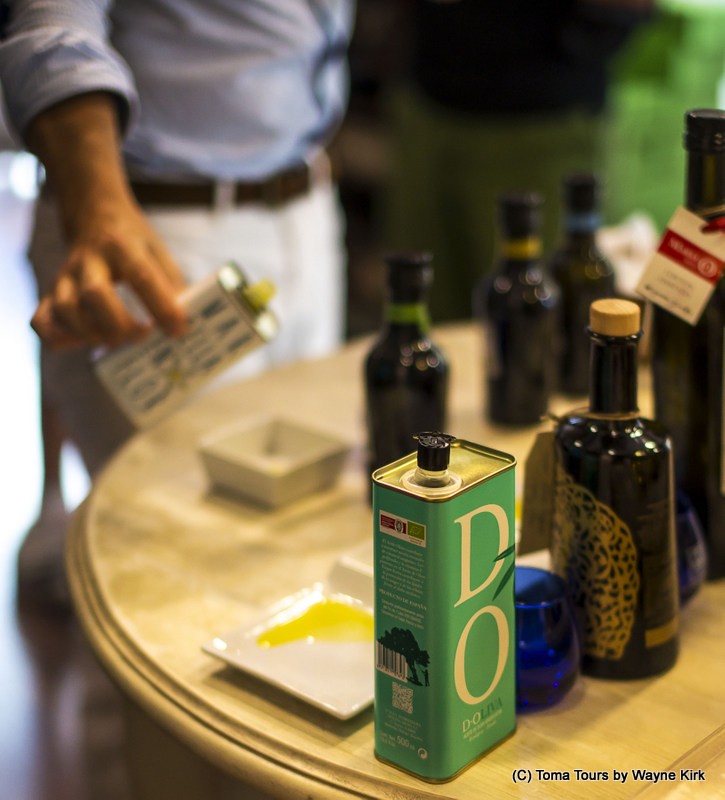
Blue Fin Tuna
May is Tuna season in Spain and a significant time for Andalucian food fanatics. In Cadiz, the ancient Almadraba tuna catch takes place, as it has done since Phoenician times, when the migrating Bluefin tuna pass from the Atlantic into the Med to spawn.
Due to the traditional catching methods used, the product is among the best in the world and there are whole festivals dedicated to it! It’s a must-try, whether in tartare form or shop-bought tinned ventresca (belly) from Barbate. You can also try a variety of dishes during the annual tuna tapas festival ‘Ruta del Atun’ in Cadiz.
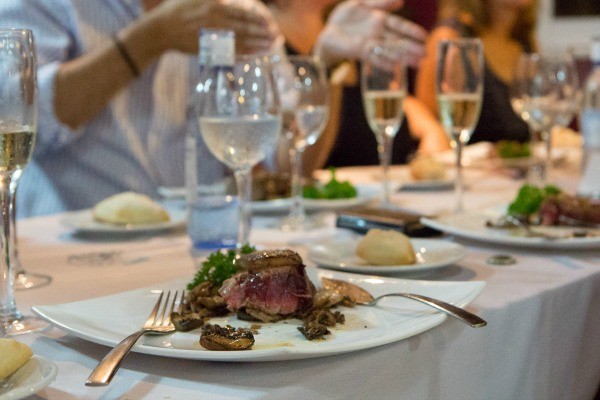
Octopus & Squid
As we’ve already highlighted, seafood is a staple part of many Andalucian recipes. In the south of Spain, octopus tentacles are often cooked slowly over hot coals to give them a wonderful woodsmoke-infused taste. Up in the north, pulpo a la gallega (or ‘a feira’) is served cold with paprika.
Its cephalopod cousin, squid, can also be found cooked in a dizzying range of ways up and down the peninsula. A couple of the most common dishes include fried rings, grilled whole squid or deep-fried baby squid (calamaritos or puntillitas).
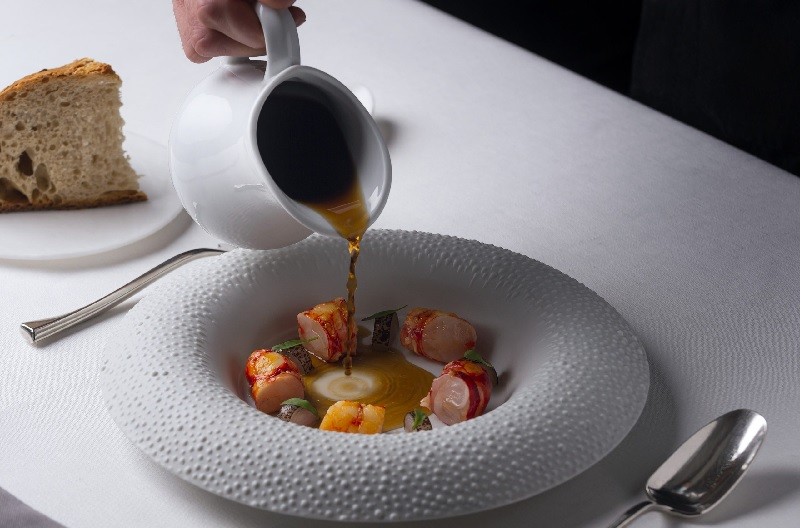
Cold Soups
Gazpacho is a cold tomato soup, made with peppers and cucumbers, that’s often served in southern Spain as a refreshing starter during th
e summer months. Its cousin, salmorejo, hails from Cordoba and is thickened with bread and often comes sprinkled with jamón and egg.
Another cold soup that’s well worth a try in summer is ajo blanco. Made with almonds, bread, garlic, olive oil and a dash of vinegar, it’s delicious and a wonderful relief to very warm weather.
Cured Meats
Pork is king in Spain, and there are many cuts that are unusual to visitors. Two in particular are Presa and Secreto: these are quickly cooked on high heat and served crispy on the outside and slightly pink in the middle. Ensure the meat is from an Iberian pig (Ibérico), as they’re marbled with fat.
Sausages are also a huge deal in Spain. While chorizo (again, ideally of the Ibérico variety) is the headlining act here, there are countless others to work your way through.
A few of the main players in traditional Andalusian cuisine include Catalonia’s fuet and butifarra, Aragon and the Basque Country’s chistorra and Burgos’s Morcilla. The latter is made from a blend of pig’s blood flavoured with onion, garlic, salt, pepper and paprika, which is then mixed with rice. Trust us, it’s much nicer than it sounds!
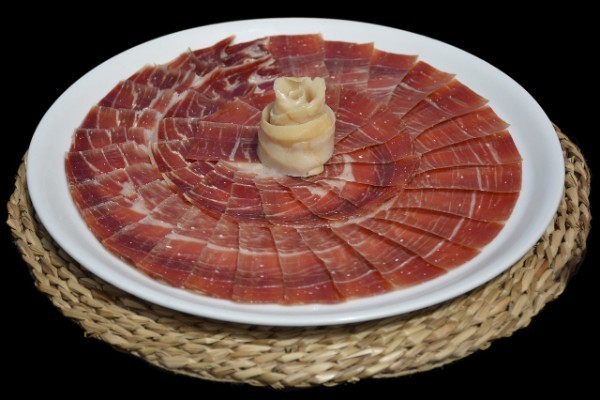
Convent Cakes
In many convents in Andalusia, the nuns who live there are famed for their cake and pastry-making skills. They offer a range of homemade wares, known as dulces de convento, from simple magdalenas (plain sponge cupcakes) and almond biscuits to elaborate marzipan sweets and traditional Christmas delicacies.
At the entrance to the convents that sell cakes and pastries, there’s usually a list of produce, prices and opening times, a bell and a small sliding or revolving tray. You place your money on the tray, ring the bell and your purchases are delivered back on the tray. But don’t expect to see or hear the nun behind the convent walls!
Where to Eat Andalusian Food
Wondering where some of the best places are to sample Andalusian food? We have a range of fantastic gourmet guides on our blog filled with recommendations based on our unique knowledge of the area.
Wanting to try the fruit of Andalucia’s vines? Read A Guide to the Best Wine Tasting Experiences in Ronda.
Visiting the famous Alhambra? Here’s our pick of The Best Restaurants in Granada.
Looking for a quick bite to eat before a night out? Choose from one of The 5 Best Tapas Bars in Marbella.
Staying in the popular resort town Estepona? Here are some of The Best Restaurants in Estepona.
Planning a luxurious experience of Andalucian cuisine? We’ve got a guide to the best Michelin Star Restaurants in Cadiz.
And finally, fancy immersing yourself in Spanish food culture alongside the nightlife? Here’s a breakdown of The Best Restaurants in Malaga.
A Note on Spanish Dining Times
Perhaps the best advice when visiting Spain to enjoy Andalusian food is to immediately change your eating patterns. Everything happens in the country just that little bit later: most good restaurants won’t open for lunch until around 14.00 hrs and for dinner until around 20.00 hrs.
If you go out for dinner around 17.00 hrs or 18.00 hrs in summer, you will likely find the restaurants all closed ‘between turns’. During the hot summer months, it’s rare to see a Spanish family sitting down to eat their dinner until 21.00 hrs, so prepare yourselves to eat a lot later than you would at home!
Useful Phrases for Spanish Food Culture
When you’re visiting the best places to eat in Andalusia, it’ll put you in good stead to try and order at least some of your meals in the local language. Here are some useful words and phrases you might want to memorise before you travel.
Tapas: A light bite generally served to accompany a drink. The Spanish typically eat tapas during the evenings, from 20.00hrs onwards. They can often be eaten standing at a bar or at a high table, as part of a lighter, more informal dining experience.
Ración: A full portion/plate of food, usually meant to be shared.
Media ración: A half portion/plate of food.
Menu del día: directly translated as ‘menu of the day’, this is a set lunch menu of two or three courses served during the week.
Poco hecho: rare
Al punto: medium, or ‘just right’
Bien hecho: well done
Explore Gastronomy in andalucia
Andalucia is one of the best regions to visit in Spain for incredible gourmet experiences. Whether you’re sipping on local wine and sherry, enjoying a spectacular spread of tapas, or sitting down to a Michelin-star meal, there are all kinds of Andalusian cuisine options available to enhance your holiday.
Appetite suitably whetted – and looking to try some of these Spanish gastronomic highlights? Speak to our Guest Experience Team to book a table at a local restaurant or organise a top-class chef to cook for you at your Andalusian villa.
You might also like





